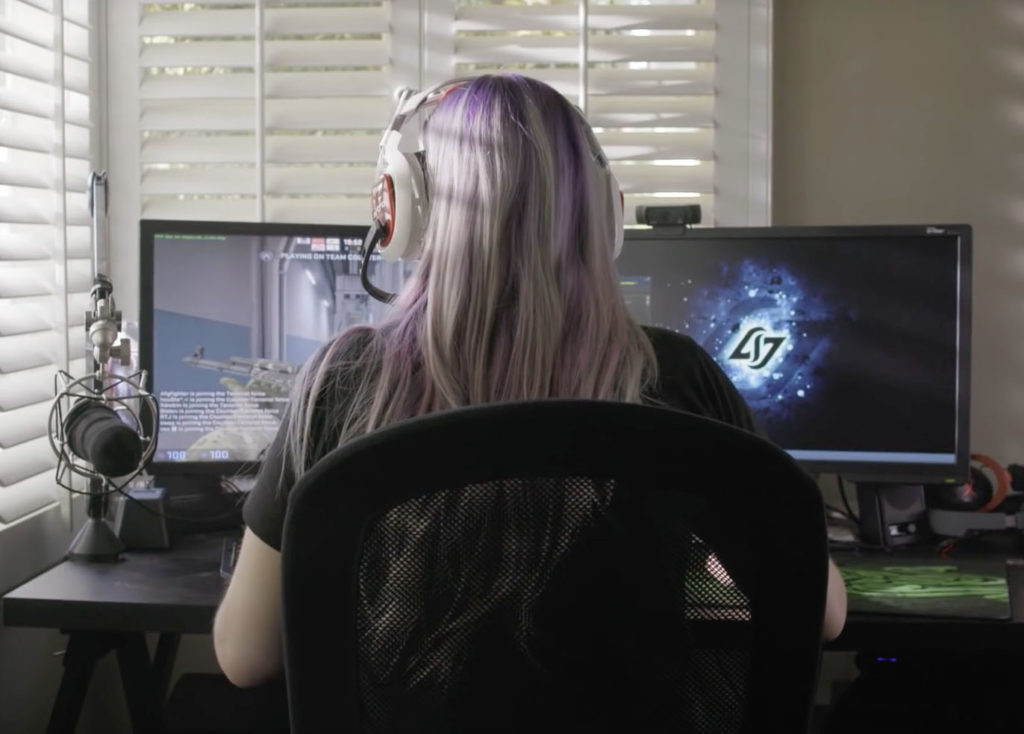Gaming Video Content (GVC) has become mainstream thanks to outlets like YouTube, Twitch and now Facebook. This content can range from livestreams to walkthroughs, trailers, comedy and more. Just how popular is this gaming content?
SuperData predicts that the worldwide audience for GVC will reach 665 million in 2017, more than double the population of the US.
The global audience will experience a 21 percent increase in viewership from 2017 to 2021, SuperData says in its latest report, “Gaming Video Content and the New Essential Audience.” Females now make up 46 percent of the GVC audience and viewers have a higher average income than traditional gamers, the company reported Thursday.
Big Views, Big Revenue
GVC is on track to generate $4.6 billion in revenue in 2017 through advertising and direct spending, a level that would outpace revenue generated by sports. To put that in perspective, the top soccer leagues in Spain and Germany earned $3.2 billion and $3.5 billion respectively in the 2015-2016 season.
Of the revenue generated from GVC, $3.2 billion will be from ads and sponsorships, SuperData predicted. The remaining 31 percent of revenue will be direct to the streamers, with nearly half of all US GVC viewers paying for a subscription or making a voluntary donation. GVC viewers are highly loyal to the streamers they follow and pay to have access to ad-free streams or to earn on-air shout outs.
Amazon’s Twitch earns 37 percent of GVC revenue despite only having 16 percent of the viewers. In addition, 51 percent of Twitch revenue comes from direct spending, versus 31 percent for the industry overall. Amazon recently launched the ability to purchase digital PC games directly from Twitch streams.
According to SuperData’s research, 51 percent of GVC viewers have purchased a game directly after seeing it featured in a stream. PC and console players who watch this content spend over $70 a month on digital games and in-game content, 56 percent more than their non-viewer counterparts.
Gaming Is The New TV
SuperData found that these audiences are less likely to engage with mainstream platforms like cable TV, with 20 percent of US GVC streamers being “cord-cutters,” compared to eight percent of the general US population. Twenty-seven percent of livestream viewers watching most often during weekday evenings, often replacing primetime TV. Between YouTube’s 517 million users and Twitch’s 185 million, the GVC audience surpasses mainstream channels like ESPN and HBO.
“Gaming Video Content represents a highly desirable market to advertisers due to the fact that its audience is young, tech-savvy and willing to spend money,” Carter Rogers, research manager at SuperData Research, said in a statement. “Companies who do not advertise to GVC viewers risk missing potential customers as they turn to streams over legacy media. With a global audience that reaches more viewers than HBO, Netflix, ESPN and Hulu combined, brands could be losing out on the next primetime viewing activity—not unlike TV or sports viewing at their peaks.”
Now Playing
Over 40 percent of US GVC viewers watch walkthroughs, trailers and humor videos. These genres appeal to both casual and hardcore gamers whereas livestreams, peer-to-peer and esports content disproportionately attract hardcore gamers, SuperData noted.
Viewers watched nearly 100 million hours of League of Legends gameplay on Twitch in February of 2017, followed by Counter Strike: Global Offensive (CS:GO), with viewers watching 40 million hours.
SuperData’s study found that esports and livestream viewers watch more than four hours of content per week, and these types of content have become appointment viewing, much like primetime TV or real-life sporting events.

